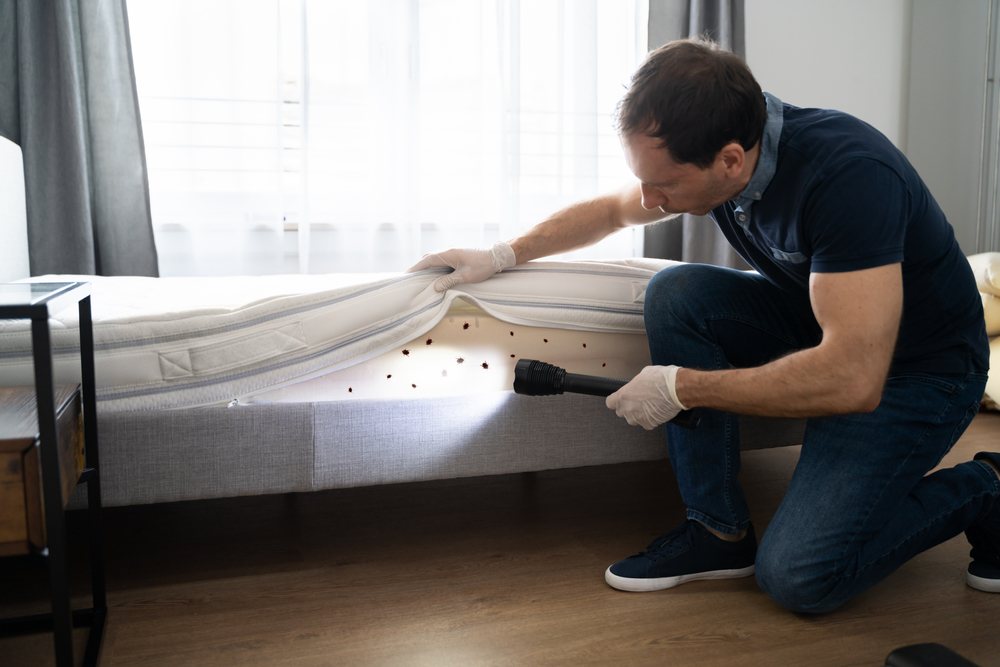Bed bugs are a common occurrence in homes and hotels across the world.
The U.S. is not an exception. According to the NPMA:
(National Pest Management Association)
20% of Americans have either personally experienced bed bugs, or know someone who has.
Since it appears bed bugs are here to stay…
The developed world is determined to learn more about these historic pests.
The more you know about bed bugs, the easier it will be for you to prevent an infestation. Aside from the physical symptoms, bed bugs can turn your life upside down.
In this article we will start with the basics.
Covering pressing bed bug questions people ask every day.
These questions include how fast bed bugs move, how they spread, whether they can jump or fly, and more.
On that note… Here we go.
Page Contents:
Do Bed Bugs Fly?
No, bed bugs do not fly. Though this doesn’t mean they cannot travel far distances. Bed bugs are natural hitchhikers, and spread around the world by crawling into luggage, clothing, and bags. Bed bugs crawl around using their six legs, traveling at the speed of 3 to 4 feet per minute.

There is a common misconception that bed bugs fly because they tend to appear out of nowhere.
Since bed bugs are parasites, they not only use their hosts to feed, but they rely on them for travel as well.
If you wanted to simulate bed bugs flying…
You could put a blow dryer to them. According to Stephen Kells, a bed bug researcher at the University of Minnesota, “A blow dryer will cause them to fly 1.2 meters” he says.
Do Bed Bugs Jump?
The short answer is no, bed bugs do not jump. So how do they move around on their own? Bed bugs can only crawl, and thanks to their special legs, they can move across various surfaces and seemingly defy gravity. They can move across walls and ceilings as efficiently as they maneuver over floors, furniture, and textile.

Whether you see them or not…
Your household is home to a variety of insects. You’ve probably encountered or heard about different species of bugs that are mistaken for bed bugs.
Such as:
- Fleas
- Ticks
- Carpet Beetles
- Cockroach nymphs
- And more.
Click here for full list.
The most common mistake is not being able to differentiate one small bug species from another.
For example:
This is exactly what happens with bed bugs and fleas. People are left wondering if bed bugs can jump because people see fleas around the bedroom and misidentify them as bed bugs.

Identifying the pests that are plaguing your home is a critical first step to removal.
Every insect requires its own specific treatment.
So treating the wrong type of bug…
Will only give these creatures more time to spread. Causing the infestation to persist longer.
Since live bugs are hard to look at closely:
(even to the most observant).
You can decipher an infestation by the attributes of their bites on your skin.
Do Bed Bugs Jump from Person to Person?
It’s completely logical to be concerned with how bed bugs spread once you’re familiar with the damage they can cause.
For most people, everything they know about bed bugs is from the old folk tale.
(Don’t let the bed bugs bite).
To reiterate, Fleas jump from person to person or from animal to animal. This is why those who are misidentifying bed bugs will often think they saw a bed bug jump.
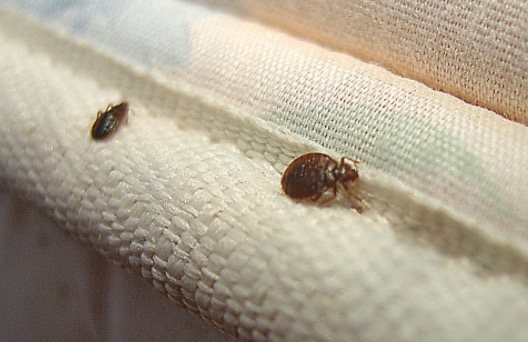
This is another misconception regarding bed bugs. These pests cannot jump from person to person.
They simply DO NOT spread in this fashion.
Bed bugs typically won’t live on your body. In fact, they prefer to hide in areas with minimal disturbance.
(Until they’re ready for a feeding).
These include areas like:
- Behind furniture
- Bed Sheets
- Piles of laundry
- Within folds of the mattress
Since bed bugs hide in these places, travelers will unknowingly stay in infested hotels, motels or Airbnbs, and bring these creatures home with them.

Bed bugs only stay on the human body for a brief moment.
As soon as they feed, they go back into hiding.
The cycle endlessly continues until you discover the infestation and treat it adequately. Bed bugs have a 5 phased lifecycle that lasts about a year, and their ability to breed/spread is impressive.
So if not dealt with accordingly…
bed bugs will continue spreading out of control.
What Small Bugs Jump?
Knowing your bugs can help you quickly identify the ones in your home and act accordingly.
All bugs can be divided into three categories based on their mobility:
- Bugs that fly
- Bugs that crawl
- Bugs that jump
There are plenty of small bugs able to conquer the ground by jumping.
However, only a few of them are known to share a household with humans. We’ve already established that bed bugs can’t jump.

What does it leave us with?
When it comes to jumping bugs, homeowners typically encounter either fleas or springtails.
However, unlike bed bugs that can survive up to 1 year without a host, fleas can not.
If you don’t have a pet and are experiencing a flea infestation, fleas must be feeding on something.
Therefore, it’s likely you have a rodent infestation as well.
(Rodents acting as the food source for Fleas).
Springtails can be found in dark and damp areas in a household.
They are also very easy to spot. Springtails hang out in groups and are also excellent jumpers. A springtail infestation is usually a sign of water damage and potential mold.
Do Bed Bugs Move Fast?
Bed bugs don’t move very fast on their own. Since they rely on their hosts to travel for them, they haven’t had the need to evolve stronger mobility. Since bed bugs reside close to a food source, they ensure there is little likelihood they will need to travel far distances on their own.
Bed bugs will travel at 0.045 miles per hour. They tend to move steadily at this slow pace.
The problem is they are quite versatile when it comes to the surface they can travel on.
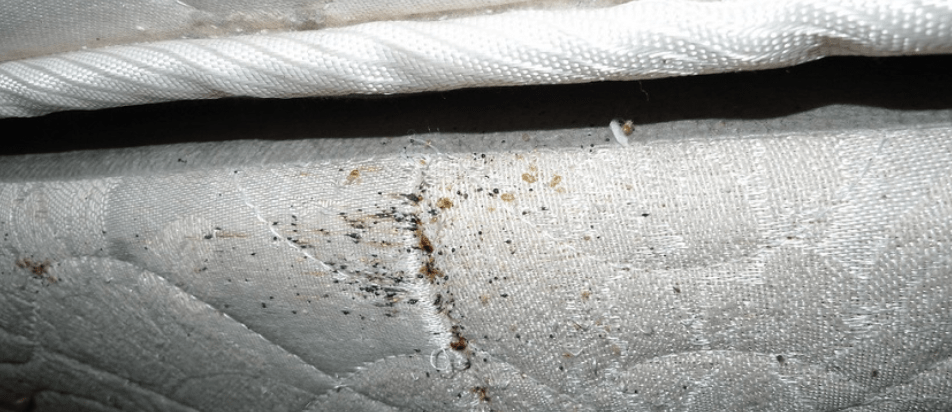
Even though bed bugs move slowly…
They are able to travel around a house or a hotel room with ease. They can easily switch between different hiding spots and infest places that are well-distanced.
In the case of severe infestations, bed bug overcrowding can occur.
This requires bed bugs to get more creative in terms of where they can hide.
In these situations, bed bugs will resort to building homes within:
- Appliances
- Electrical Sockets
- Carpeting
- Piles of Clothes
Can Bed Bugs Live in Your Hair?
If you come across bed bugs on your skin, or even worse, in your hair, it’s easy to panic. When they are not feeding, bed bugs prefer to stay hidden while looking for a suitable place to hatch. Well-hidden areas will not typically include your skin or hair.
Bed bugs can stay alive in your hair, but they will go to a piece of clothing, bedding, or furniture the moment they find an opportunity.
They simply DO NOT like to stay out in the open.
On top of that… Hair is not their target living environment.
Their specific build makes it very hard to navigate hairy areas or feed there. You are more likely to find a bed bug on your bare skin than in hair.
(This is why it’s less likely you will see bed bugs biting your furry pets).

While they can stay alive in your hair, bed bugs can’t live in your hair or feed. If you encounter a bed bug crawling on your hair you should do the following:
- Take a very hot shower with liberal use of soap/shampoo.
- Wash all clothes and dry on high heat.
- Use Cedar Oil products in your hair.
Can Bed Bugs Climb Walls?
While their name tells us that we should expect bed bugs in our beds, they are known to get around some hard to reach places.
Bed bugs don’t only hang out in mattresses and bedding. They can move their center of operation close to the bed and be comfortable as long as a food source is nearby.
It may surprise you…
But bed bugs can climb walls and even ceilings.
If you are wondering how they do it, the answer lies in their legs.
First of all, walls and ceilings are not 100% smooth.
There are plenty of small notches and cracks on your walls. Bed bugs will use their claws to hold onto the ridges and cracks of walls.
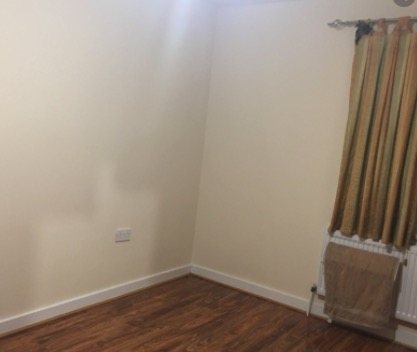
Given that they are very light, bed bugs can climb walls and ceilings without breaking a sweat.
Due to their flat bodies, bed bugs can also crawl through walls and small cracks in the infrastructure.
This is because bed bugs have been known to spread around apartment complexes and multi-family buildings.
If you live in one of these building types:
You should keep your ear to the ground regarding whether your neighbors have bed bugs.
There have been countless situations where tenants have gotten bed bugs because an adjacent unit was infested.
If you believe you neighbor does have bed bugs…
Click here for more information.
You should include walls and baseboards when you check for bed bugs, especially if there are crevices and cracks that exist.
These make great hiding spots, and bed bugs often choose them to hatch. Their eggs are sticky, so they adhere to surfaces even if they are vertical.
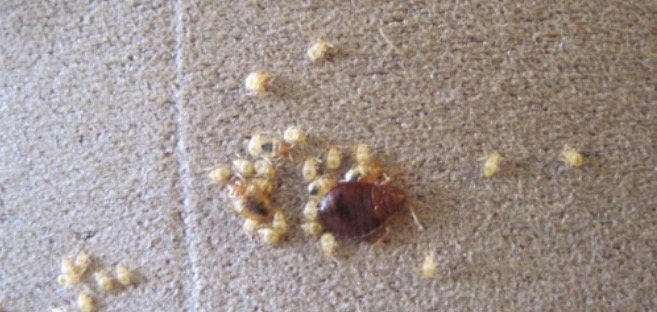
How Do Bed Bugs Get from Room to Room?
Once bed bugs are settled in a home, they don’t necessarily stick to one room.
They can find their way into other places in a household or a hotel.
If you’re wondering how they do it considering their small size, here are the answers that will help you see the whole picture.
First of all…
Bed bugs don’t have to move at all to infest a new room.
People can move them around since they can hide in clothes and handbags.
However, bed bugs can also infest a new space without our help.
We’ve already talked about their ability to climb and traverse floors, walls, and ceilings.
They can quickly go from one room to another, searching for food and a place to live in.
Bed bugs don’t necessarily use floors, walls, and ceilings to do so.
They can also use water pipes, gutters, and ventilation ducts.

How Fast Do They Spread?
Bed bugs are impressive breeders.
For instance, even if one pregnant female ends up in your home, it’s more than enough to infest the entire household.
The average lifespan of a bed bug is 10 months.
(Though it can be up to 18 months in certain cases).
Their eggs are sticky, which makes them easy to find a hidden place to hatch in.
Unlike other insects, bed bugs don’t lay that many eggs. However, they have an extraordinary hatch rate. Most of their eggs will hatch into healthy baby bed bugs.
They lay up to 12 eggs every day. A female lays up to 500 eggs in a lifetime, and their reproduction cycle is extremely short…
Providing them the ability to spread ultra-fast.
How to Stop Bed Bugs from Moving Around?
If you have bed bugs in your home, you should consider calling a professional to take care of the infestation.
Meanwhile, you can do a lot to stop them from moving about and infesting the entire household.
Start by reducing the clutter in your home.
WIth less hiding spaces, you will be able to spot bed bugs quickly.
You should also vacuum more frequently than usual. If there are cracks and crevices on your floor, walls, or ceiling, make sure to seal them.
The same applies to electrical and light sockets.

Finally, install door sweeps to prevent bed bugs from exiting the room and using your hallway to move around.
These are one of many DIY methods that will help mitigate a bed bug infestation.
Bed bugs are quite resilient insects. Although they prefer feeding every 5 days or so, they can stay alive without food for several months.
If you suffered an injury from bed bug bites in your apartment or hotel room…
You may be eligible for a big payout.
Consider talking to a bed bug lawyer. You may have a case and be eligible for compensation.
Get your free consultation today! There are no fees unless you win your case.
